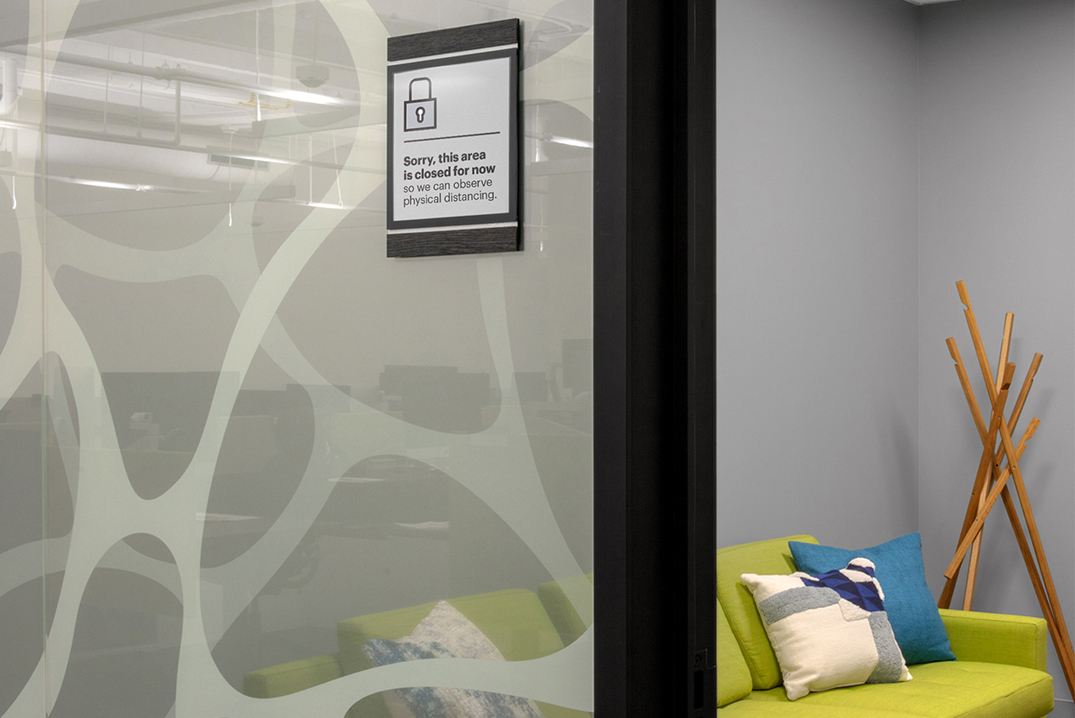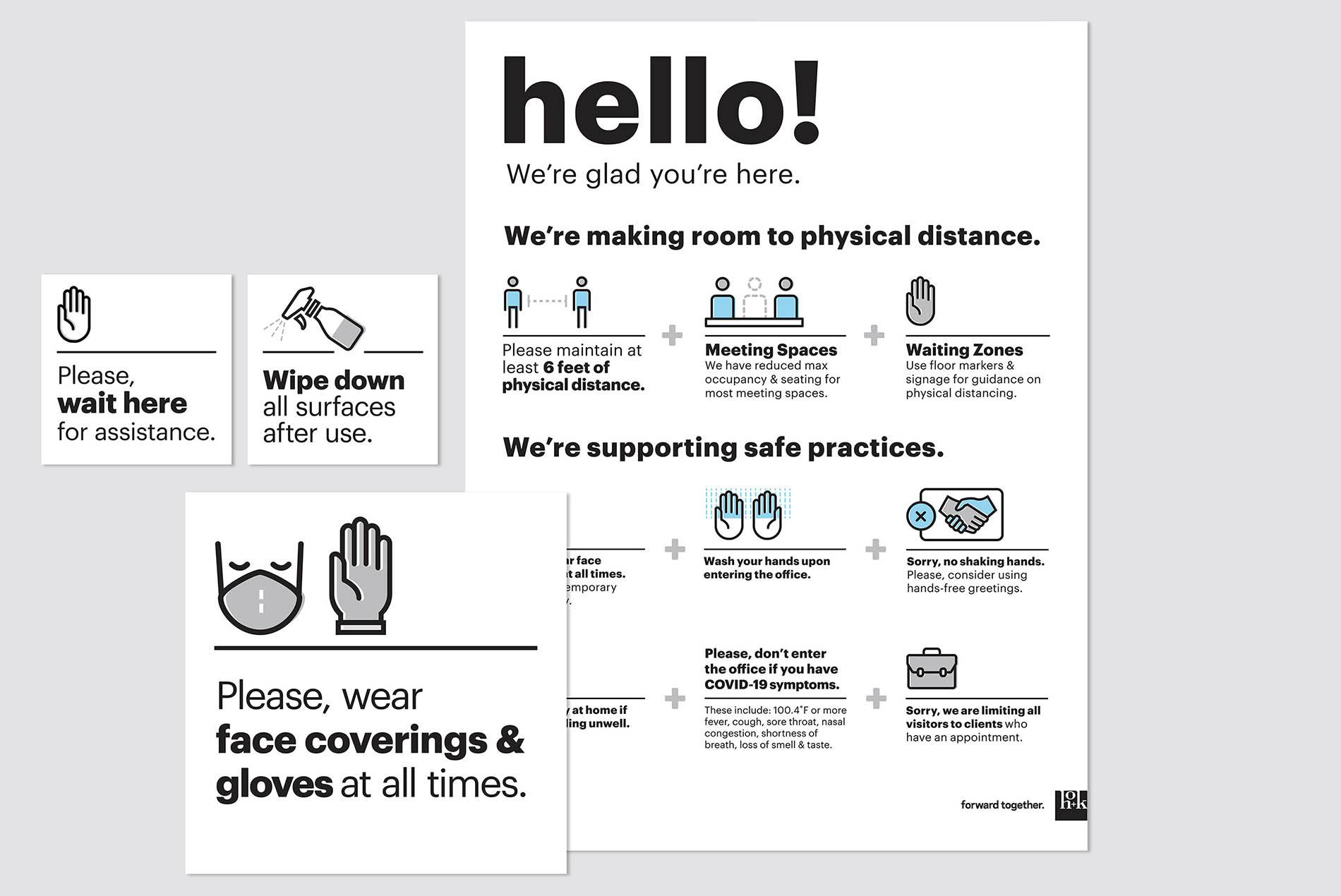As companies make plans for bringing people back into the workplace, HOK Experience Design Director Jeff Lancaster describes how new signage can help them feel comfortable by supporting communications programs about physical distancing, hygiene, traffic patterns and more.
The coronavirus pandemic has generated new workplace signage and wayfinding needs. As part of their office reopening plans, organizations can use graphics to help employees and visitors feel safe, comfortable and welcome in the space while also communicating new protocols.
Start With a Message Master Plan
Before thinking about these COVID-19-related signage and wayfinding systems, companies should develop an awareness campaign for their entire organization that sets the tone and provides answers to people’s frequently asked questions.
A message master plan maps strategic communication points across the space and provides recommendations for blending new signage into existing systems and workplace branding. The plan defines the information people need to know and the most impactful methods for communicating those messages. It categorizes each element of communication by type, author, platform and budget.
Signage can then continue this messaging for employees who return to the office. It can provide guidance for safe experiences in elevators and stairs, entry and reception areas, conference rooms, general use areas including restrooms and pantry/break areas, workstations and common areas. And this new signage can go beyond conveying information to express gratitude to employees and remind them that the organization cares about their well-being.

Six Guiding Principles
Here are six principles to consider when creating new signage and wayfinding as part of an overall “back-to-the-office” communications campaign:
- Distinctiveness: Create signage that differentiates the organization’s brand and that is easily distinguishable from other types of wayfinding, advertising and regulatory messaging.
- Simplicity: Include only the most importance pieces of graphic information—three or four at the most—on each sign. Omit extraneous information.
- Consistency: Ensure that features and placement of related signs are consistent. Use standardized icons throughout the space. Place signs at key points of employees’ daily routes.
- Legibility: To make signage easily readable for the entire office population, use proper typographic techniques and best practices for color.
- Messaging: Formulate messages that support and reinforce the organization’s overall communication goals. Write succinctly and with a warm personality that resonates with employees.
- Budget: Consider the cost implications of potential solutions during every phase of the project: from installation through maintaining the signage over time. Establish preliminary cost projections early in the process and stick to the budget.
Turnkey and Custom Solutions
Organizations that don’t have a graphics team capable of carrying out a program like this can engage an external firm.
A turnkey solution from a local signage company or design firm could include a set of basic signs that help employees and visitors move through the space in a safe way, along with providing health and wellness reminders.
A custom signage solution could include a ‘kit-of-parts’ of custom icons, messages, colors, materials and specialty signage unique to a specific building. A design firm can integrate this custom solution with an overall communications campaign.
HOK’s Experience Design team is available to help organizations planning return-to-the-office signage and wayfinding programs. This new “Navigating a Path Forward” publication provides more information about the assistance we can provide. Please contact jeff.lancaster@hok.com with any questions.
